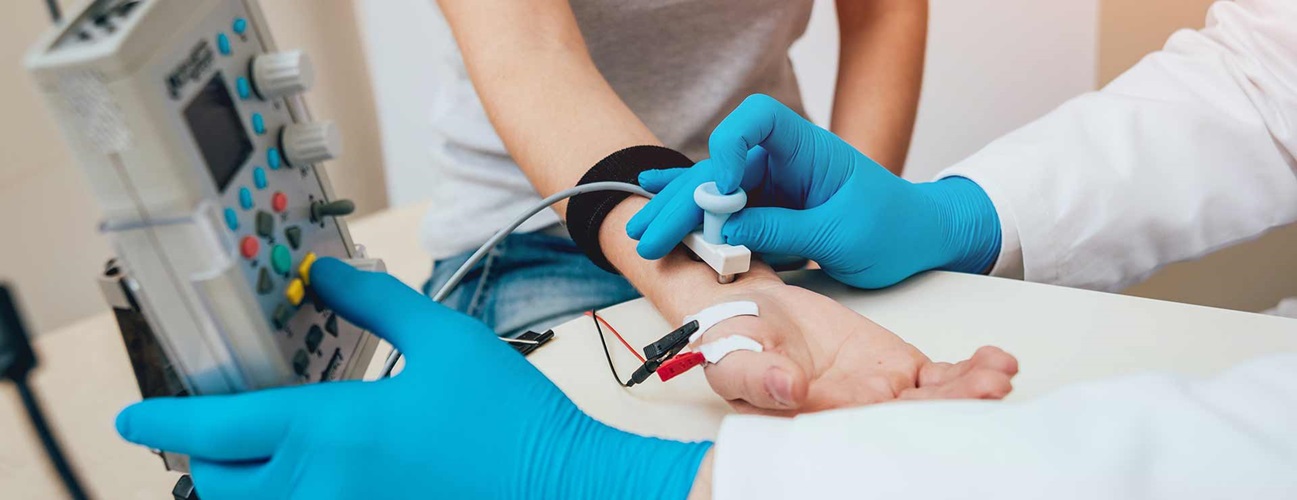EMG Testing
Electromyography (EMG) is a diagnostic procedure to assess the health of muscles and the nerve cells that control them (motor neurons). EMG results can reveal nerve dysfunction, muscle dysfunction or problems with nerve-to-muscle signal transmission.

How Does an Electromyography (EMG) Work?
During an EMG, a needle electrode is inserted through your skin into various muscles. The test evaluates the electrical activity of your muscles when they contract and when they’re at rest.

Nerve Conduction Studies
Nerve Conduction Studies are usually performed as part of the EMG and uses electrode stickers (surface electrodes) applied to the skin. They measure the speed of conduction in your nerve when a small current passes through the nerve. This provides information about how well the nerve is functioning.

Does an EMG Test Hurt?
You may feel a little pain when the electrodes are inserted, but most people can complete the test without much discomfort.


